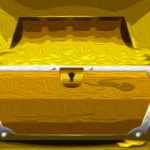
Invesco and Galaxy ETF Fee Slashed in Response to Intense Market Competition
In response to the fierce competition in the spot bitcoin exchange-traded fund (ETF) market, Invesco and Galaxy Asset Management have made a strategic move to lower the long-term fee of their joint spot bitcoin ETF, the Invesco Galaxy Bitcoin ETF (BTCO). This decision, announced on Monday, is aimed at positioning the ETF more competitively against the sector heavyweights.
The fee reduction brings BTCO's expense ratio down from 0.39% to 0.25%. Additionally, Invesco has announced a waiver of these fees for the first six months or until the ETF reaches $5 billion in assets under management (AUM). This aggressive pricing strategy is intended to enhance the fund's appeal among investors and compete more effectively with dominant players in the market.
While BTCO is not the lowest-cost option available, with Franklin Templeton's spot bitcoin ETF holding that distinction with a post-waiver expense ratio of 0.19%, the reduced fee places BTCO in a more competitive position against other industry players. It's worth noting that Grayscale's ETF remains the most expensive among the new offerings and is currently experiencing significant outflows.
Since the U.S. regulators approved the launch of spot bitcoin ETFs earlier this month, there has been a noticeable shift in investor inflows. Industry giants such as Blackrock Inc. and Fidelity have captured a significant market share, attracting combined inflows of approximately $4 billion, representing roughly 70% of the total spot bitcoin ETF inflows. In contrast, BTCO has about $283 million.
Despite the competitive landscape, shares of BTCO experienced a 2.8% increase on Monday, mirroring a similar uptick in the price of bitcoin. This uptrend suggests a positive investor response to the fund's new pricing strategy.
What Can We Expect for the Future of Spot Bitcoin ETF Fees?
With the ongoing fee war amongst issuers of spot bitcoin ETFs, it raises the question of how low the fees on these ETFs will eventually settle at. As competition continues to intensify, it's likely that fees will continue to decrease in order to attract more investors. It remains to be seen how low the fees will go and which ETFs will emerge as the most cost-effective options in the market.
What are your thoughts and opinions on the future of spot bitcoin ETF fees? Share your insights in the comments section below.
Frequently Asked Questions
What are the benefits of a gold IRA
There are many benefits to a gold IRA. It is an investment vehicle that can diversify your portfolio. You decide how much money is put in each account and when it is withdrawn.
You can also rollover funds from other retirement accounts to a gold IRA. This makes for an easy transition if you decide to retire early.
The best thing about investing in gold IRAs is that you don’t need any special skills. They're available at most banks and brokerage firms. Withdrawals are made automatically without having to worry about fees or penalties.
There are also drawbacks. The volatility of gold has been a hallmark of its history. It's important to understand the reasons you're considering investing in gold. Do you want safety or growth? Is it for security or long-term planning? Only once you know, that will you be able to make an informed decision.
If you are planning to keep your Gold IRA indefinitely you will want to purchase more than one ounce. You won't need to buy more than one ounce of gold to cover all your needs. Depending upon what you plan to do, you could need several ounces.
If you're planning to sell off your gold, you don't necessarily need a large amount. Even a single ounce can suffice. However, you will not be able buy any other items with those funds.
How much gold can you keep in your portfolio
The amount that you want to invest will dictate how much money it takes. Start small with $5k-10k. As you grow, it is possible to rent desks or office space. So you don't have all the hassle of paying rent. Rent is only paid per month.
You also need to consider what type of business you will run. My website design company charges clients $1000-2000 per month depending on the order. So if you do this kind of thing, you need to consider how much income you expect from each client.
Freelance work is not likely to pay a monthly salary. The project pays freelancers. This means that you may only be paid once every six months.
You must first decide what kind and amount of income you are looking to generate before you can calculate how much gold will be needed.
I recommend starting with $1k-$2k of gold and growing from there.
How much tax is gold subject to in an IRA
The fair market value at the time of sale is what determines how much tax you pay on gold sales. If you buy gold, there are no taxes. It's not considered income. If you sell it after the purchase, you will get a tax-deductible gain if you increase the price.
For loans, gold can be used to collateral. When you borrow against your assets, lenders try to find the highest return possible. In the case of gold, this usually means selling it. It's not guaranteed that the lender will do it. They might just hold onto it. Or, they may decide to resell the item themselves. You lose potential profits in either case.
To avoid losing money, only lend against gold if you intend to use it for collateral. It is better to leave it alone.
How much of your portfolio should be in precious metals?
To answer this question we need to first define precious metals. Precious metals refer to elements with a very high value relative other commodities. This makes them extremely valuable for trading and investing. The most traded precious metal is gold.
But, there are other types of precious metals available, including platinum and silver. While gold's price fluctuates during economic turmoil, it tends to remain relatively stable. It is not affected by inflation or deflation.
In general, all precious metals have a tendency to go up with the market. That said, they do not always move in lockstep with each other. For instance, gold's price will rise when the economy is weak, while precious metals prices will fall. Investors expect lower interest rates which makes bonds less appealing investments.
However, when an economy is strong, the reverse effect occurs. Investors prefer safe assets such as Treasury Bonds and demand fewer precious metals. They become less expensive and have a lower value because they are limited.
It is important to diversify your portfolio across precious metals in order to maximize your profit from precious metals investments. Furthermore, because the price of precious Metals fluctuates, it is best not to focus on just one type of precious Metals.
What is the best precious-metal to invest?
The answer to this question depends on how much risk you are willing to take and what type of return you want. While gold is considered a safe investment option, it can also be a risky choice. For example, if your goal is to make quick money, gold may not suit you. Silver is a better investment if you have patience and the time to do it.
If you're not looking to make quick money, gold is probably your best choice. If you are looking for a long-term investment that will provide steady returns, silver may be a better choice.
What is a Precious Metal IRA (IRA)?
An IRA with precious metals allows you to diversify retirement savings into gold and silver, palladium, rhodiums, iridiums, osmium, or other rare metals. These are called “precious” metals because they're very hard to find and very valuable. These are excellent investments that will protect your wealth from inflation and economic instability.
Precious metals are often referred to as “bullion.” Bullion refers actually to the metal.
Bullion can be purchased via a variety of channels including online sellers, large coin dealers, and grocery stores.
An IRA for precious metals allows you to directly invest in bullion instead of purchasing stock shares. This allows you to receive dividends every year.
Precious metal IRAs do not require paperwork nor annual fees, unlike regular IRAs. Instead, you pay only a small percentage tax on your gains. Additionally, you have access to your funds at no cost whenever you need them.
Statistics
- Indeed, several financial advisers interviewed for this article suggest you invest 5 to 15 percent of your portfolio in gold, just in case. (aarp.org)
- Gold is considered a collectible, and profits from a sale are taxed at a maximum rate of 28 percent. (aarp.org)
- This is a 15% margin that has shown no stable direction of growth but fluctuates seemingly at random. (smartasset.com)
- Contribution limits$6,000 (49 and under) $7,000 (50 and up)$6,000 (49 and under) $7,000 (50 and up)$58,000 or 25% of your annual compensation (whichever is smaller) (lendedu.com)
- If you take distributions before hitting 59.5, you'll owe a 10% penalty on the amount withdrawn. (lendedu.com)
External Links
forbes.com
- Gold IRA, Add Sparkle to Your Retirement Nest egg
- Understanding China's Evergrande Crisis – Forbes Advisor
irs.gov
investopedia.com
wsj.com
- Saddam Hussein's Invasion Helped Uncage a Bear In 1990 – WSJ
- Want to Keep Gold in Your IRA at Home? It's not legal – WSJ
How To
Three Ways to Invest In Gold For Retirement
It is crucial to understand how you can incorporate gold into your retirement plans. You have many options for investing in gold if there is a 401K account at your workplace. It is also possible to invest in gold from outside of your work environment. You could, for example, open a custodial bank account at Fidelity Investments if your IRA (Individual Retirement Account) is open. If precious metals aren't your thing, you may be interested in buying them from a dealer.
These are the three rules to follow if you decide to invest in gold.
- Buy Gold With Your Cash – Do not use credit cards to purchase gold. Instead, deposit cash into your accounts. This will help to keep your purchasing power high and protect you against inflation.
- Own Physical Gold Coins – You should buy physical gold coins rather than just owning a paper certificate. The reason for this is that physical gold coins are much more easily sold than certificates. Also, there are no storage fees associated with physical gold coins.
- Diversify your Portfolio. Also, diversify your wealth and invest in different assets. This helps to reduce risk and provides more flexibility when markets are volatile.
—————————————————————————————————————————————————————————————-
Based on [POSTTITLE]
by [POSTAUTHOR]

















